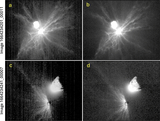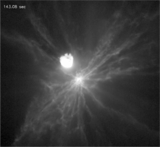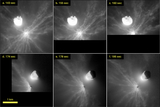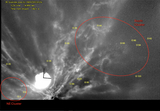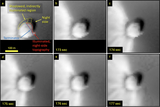Image Details
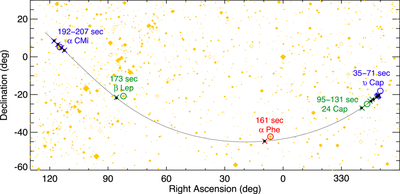
Caption: Figure 14.
Plot showing the apparent path of Didymos across the celestial sphere (thin black line), as computed from the final LICIACube trajectory. The five stars used to derive the trajectory are highlighted by the colored circles, with the positions of Didymos measured in the 14 corresponding images shown by crosses of the same color. The small black filled circles denote the positions of Didymos predictions for the times of each image, with their correspondence to the crosses indicating the good fit of the trajectory solution. Yellow diamonds are stars from the Bright Star Catalog, with the size reflecting their brightness.
Copyright and Terms & Conditions
© 2025. The Author(s). Published by the American Astronomical Society.


